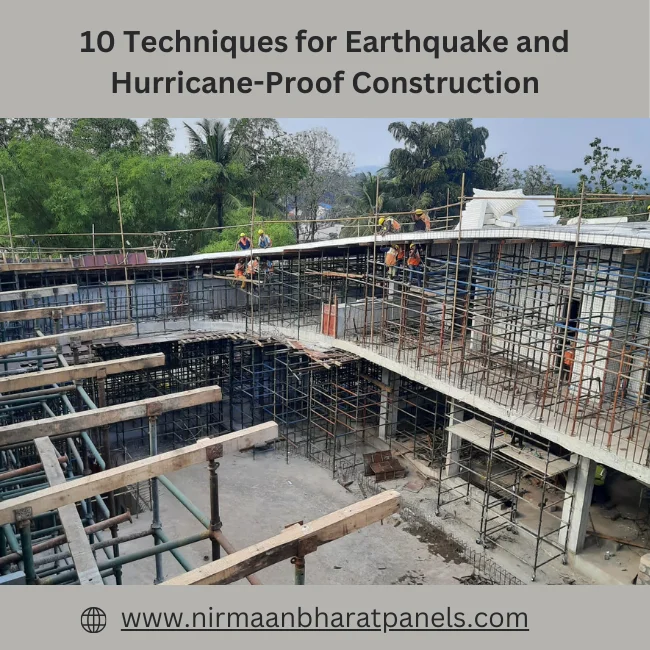Natural disasters like earthquakes and hurricanes can wreak havoc on buildings and infrastructure, causing extensive damage and loss of life. However, through careful planning and construction techniques, it’s possible to mitigate the impact of these disasters and create structures that are more resilient and better equipped to withstand their forces. In this blog post, we’ll explore 10 techniques for earthquake and hurricane-proof construction that can help minimize damage and enhance safety.
Table of Contents
ToggleReinforced Foundations:
Strong foundations are essential for withstanding the forces exerted by earthquakes and hurricanes. Reinforced concrete foundations with steel reinforcement bars provide added strength and stability, preventing the building from shifting or collapsing during seismic activity or high winds.
Flexible Structural Systems:
Designing buildings with flexible structural systems allows them to sway and absorb energy during earthquakes or high winds, rather than resisting and potentially failing under the stress. Techniques such as base isolation or incorporating damping devices help dissipate energy and reduce the risk of structural damage.
Bracing and Shear Walls:
Bracing systems and shear walls are crucial components of earthquake-resistant construction. By providing lateral support, these elements help distribute forces evenly throughout the structure, reducing the risk of collapse or structural failure during seismic events.
Impact-resistant Windows and Doors:
During hurricanes, flying debris can cause significant damage to windows and doors, compromising the integrity of the building envelope and allowing wind and water to penetrate the interior. Installing impact-resistant windows and doors made from reinforced materials can help protect against damage and maintain structural integrity.
Roof Reinforcement:
Roofs are particularly vulnerable during hurricanes, as strong winds can lift and tear off roofing materials, leading to water infiltration and structural damage. Reinforcing roofs with hurricane straps, metal bracing, or reinforced trusses can help prevent uplift and ensure that the roof remains securely attached to the building.
Adequate Drainage Systems:
Proper drainage is essential for preventing water accumulation and flooding during hurricanes and heavy rainfall. Installing effective drainage systems, such as gutters, downspouts, and French drains, helps channel water away from the building’s foundation and minimize the risk of water damage.
Securing Utilities:
Securing utilities such as electrical, plumbing, and HVAC systems is critical for minimizing damage and ensuring safety during natural disasters. Anchoring equipment and securing connections helps prevent displacement or damage, reducing the risk of fire, electrocution, or gas leaks.
Reinforced Masonry and Concrete:
Using reinforced EPS wall panels and concrete construction techniques enhances the strength and durability of buildings, making them more resistant to seismic activity and high winds. Reinforcing materials with steel bars or mesh provides added stability and helps prevent cracking or collapse under stress.
Proper Site Selection:
Choosing the right location for construction can significantly impact a building’s resilience to natural disasters. Avoiding flood-prone areas, unstable slopes, or regions with high seismic activity reduces the risk of damage and ensures the long-term stability of the structure.
Regular Maintenance and Inspections:
Regular maintenance and inspections are essential for ensuring that buildings remain structurally sound and resilient to natural disasters over time. Identifying and addressing issues such as cracks, deterioration, or corrosion helps prevent structural failure and ensures the continued safety of occupants.
Conclusion:
By incorporating these techniques into the design and construction of buildings, engineers and architects can create structures that are better equipped to withstand the forces of earthquakes and hurricanes. Investing in resilient construction not only protects property and saves lives but also contributes to the long-term sustainability and resilience of communities in the face of natural disasters.


